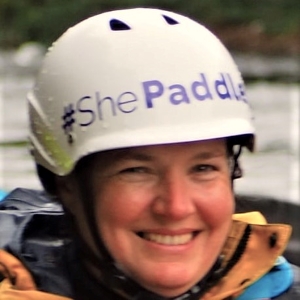British Canoeing START Award
Progress your paddling with Paddle UK (British Canoeing) Qualifications and the Introductory START Personal Performance Award. Cost includes your START certificate.
Level: Grade 0 - This means it is a flat paddle and should be within most people’s abilities.
-
Every Saturday or as part of any coaching sessions
-
Perfect for Families to Learn About Paddlesport
-
£29
-
Included in all lessons and every Saturday morning April to October
-
9am
-
Duration: Start 9:00 am (2-hour course)
This is the perfect intro to paddlesport short course, great to gain confidence and learn some basic skills. Brilliant for families with kids and friends to take to the water with a professional instructor to learn the foundations. Come and try it intro sessions with our coaching team for a 2 hour basic intro with qualification.
What's Included
-
Craft
-
Buoyancy Aid
-
Bank Based Briefing
-
Dry Bag
-
Paddles
-
Professional Coaches
-
Certification Fee
-
Activity Equipment
We also have some back support for those with back problems
What else we can provide on request
-
Waterproofs
-
Hire of Wetsuits
-
Hire of Drysuits
Dates
Included in all lessons and every Saturday morning April to October 9am to 11am
Requirements
Suitable for ages 12+ Anyone under the age of 18 needs to be accompanied by an adult 21 years and over. You can choose to complete this course using a Canoe, Kayak, or Stand Up Paddleboard.
Timings
Start 9:00 am (2-hour course)
Included
- Craft
- Equipment
- Buoyancy Aid
- Dry Bag (if needed)
- Certificate
What you will need to bring
Bring comfortable clothing such as gym wear, shorts, a t-shirt or wetsuit, along with a pair of water shoes, or old trainers. Bring a towel and a change of clothes. No special equipment or clothing is required.
Location:
We have the perfect river location for paddlesports such as canoeing, kayaking and SUPs on the River Great Ouse, at Kempston Outdoor Centre near Bedford. It is well situated just 30 minutes from Milton Keynes, an hour North of London and half way between Cambridge and Oxford.
Award Details
We can help you progress your qualifications and run British Canoeing Start, Discover and Explore Personal Performance Paddle Award Qualifications throughout the year. We can also help with introductions to moving water and expedition training and preparation.
This award is the first step of having a go. A fun and enjoyable session with practical hints and tips to introduce you to the world of paddlesport. You can choose the craft and discipline to suit your interests. Canoe Trail has a wide range of craft including SUP’s, kayaks, sea kayaks, open canoes, racing canoes, freestyle playboats, and coaches with years of experience.
Learning useful skills for an enjoyable paddling experience, providing you with the knowledge to enable you to get safely in and out of your boat, making it move and return to your start point, ensuring you feel safe and confident on the water.
This is a couple of hours and we allow you to keep the craft for a couple of extra hours to lock in your skills. You will receive a certificate from British Canoeing which will incur a small administrative fee from them.
- The New Personal Performance Awards (Paddle Awards) are British Canoeing’s pathway to becoming a competent paddler from Novice to Intermediate and then onwards to more advanced water and techniques. The syllabus allows for a personalized journey to develop core skills to feel confident and safe on sheltered water in a kayak or canoe or stand-up paddleboard.
- If for any reason, dates may need to change at Canoe Trail's discretion. This will be notified in advance.
Session Objectives
Award Content
1. Clothing and Equipment
Understanding the clothing and equipment you are using and why it is used is an important part of a first session. You should be warm, comfortable, and safe whilst on the water. When being kitted out, some things you can consider are:
Why am I wearing a buoyancy aid? - How can I tell it is fitted correctly?
What clothing have I chosen to wear? - Are there items of clothing not suitable for being on the water?
What type of craft will I be paddling and why is it suitable? - Might other craft be more or less stable? How many people is my craft suitable for? How should I position myself to be comfortable?
What style of paddle have I been given and why? - Is there a blade at each end of my paddle or only one? Why is this? Does being right or left handed affect the paddle I am given?
2. Getting on the Water
Having decided upon equipment for the session you must get it to the water without damage to it, yourself, or the environment. Some craft can be heavy and need more than one person to carry them. Once on the water, your craft can move around.
I may need to consider:
Getting craft to the water safely and efficiently: What is the best way to lift? Do I need more than one person?
the safest way to get into/onto my craft: How will I use my body to balance the craft? Is the bank slippery?
Where am I getting on the water: Is there a drop from the bank? Why am I getting on here and why might other places not be suitable? How can I minimise damage to the bank when getting on?
3. On the Water
In order to maximise your enjoyment on the water, you need to feel in control of your craft. Key elements of this are getting the craft to go where you want when you want it to go there. Key considerations are:
What area will I be paddling in and why? - Are there places I should not go? Do I need to be aware of any hazards? Is the water moving or still?
How can I make my boat go forward, change direction and stop?
What do I need to be aware of whilst enjoying my time on the water? - Who or what else is on the water? How can I minimise disturbance to wildlife?
4. After the Session
As you come off the water we hope you are excited and enthused about your experience. Now is the perfect time to think through all you have learned.
Look around: How can I protect both myself and the environment when I leave the water? What did I enjoy on the water? Is there anything I would like to improve? Could I be more comfortable next time? Is there another craft-type I would like to try?
Consider what you will take away: What have I enjoyed today? What would be good to learn more about?
5. Future Development
There is a wide range of options for future experiences. Clubs and centers around the country can help you to develop your skills and learn more about the choices available.
If you enjoyed your time on the water and would like to develop your skills, it might be worth considering moving on to the Paddle Discover Award.
Hire FAQ's
What's the difference between a kayak and a canoe?
If you're not sure of what each craft is, then read our guide here.
Are the trips guided?
There are no guides or instructors needed for hire. This is simply a hire where you paddle out and back to our launch point. We recommend our preferred route, however, you are free-range and able to explore the river.
What if it rains?
Unless you hear from us then your booking will run on the day agreed. Canoe Trail runs watersports, paddling, and adventurous activities throughout the year with people enjoying the river and our woodland campsite during the different seasons. On rare occasions (it only happens a couple of times a year) we may move or change your booking. This will be in freak weather conditions such as extremely high river flows in spate or during heavy storms with lightning. You can read our full FAQ here.
How does the booking process work?
We use a live booking system that will assign you the relevant craft and resources. Once you have confirmed your booking date, it is not then transferable and non-refundable in the same way you book an airline seat. Bookings are to be paid in full at the time of booking and are non-refundable. There will be no refunds for early returns, poor weather, or non-usage as per our general terms & conditions.
Location
Kempston Outdoor Centre, park at the Mill Car Park




 Sophie (Fun 4 Young People)
Sophie (Fun 4 Young People) Michael (Goldington Academy)
Michael (Goldington Academy) Gemma
Gemma Matthew
Matthew










